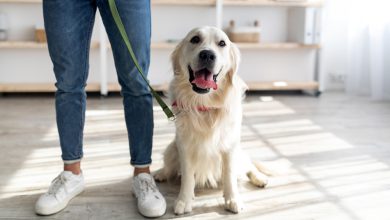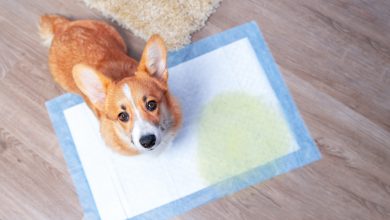How Much Exercise Do Goldendoodles Need? Vet-Approved Advice
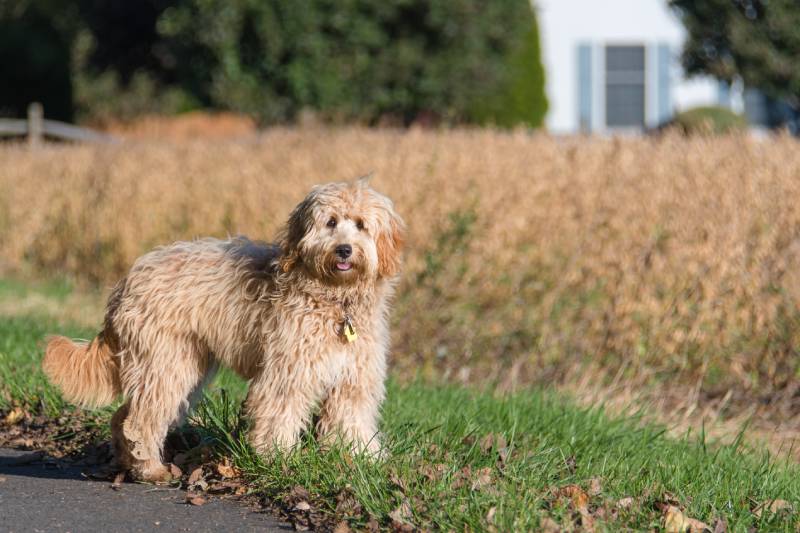
The Goldendoodle is one of the most popular hybrid dog breeds, and they’re a combination of the Golden Retriever and a standard or miniature Poodle. Although usually a low-shedding dog, there’s nothing low about the energy levels of the Goldendoodle! To stay healthy and prevent behavior issues, Goldendoodles need at least 30–60 minutes of exercise per day. Remember that every dog is different and your particular Goldendoodle may require more or less than this to tame their energy and keep them out of trouble.
In this article, you’ll learn why exercise is important for Goldendoodles and which activities they may enjoy. We’ll also discuss how to exercise your Goldendoodle safely and how to tell if your dog is overexerting themselves.


Why Is Exercise Important for Goldendoodles?
Any mixed breed will display traits inherited from one or both of their parents. In the case of Goldendoodles, both parents are high-energy dogs, so you can be confident they will be energetic. If you don’t give a Goldendoodle a safe way to burn off that energy, you can expect them to find their own way to do it, and you may not like the results.
Exercise is important for Goldendoodles because it allows them to channel their energy in a positive way. Without enough exercise, Goldendoodles can get bored and destructive. They may even develop behavioral issues like excessive barking or obsessively licking and chewing themselves.
Goldendoodles are also very fond of eating. If they don’t get enough exercise, they can become overweight, which can cause multiple health issues, including diabetes. Older Goldendoodles that don’t stay active can lose muscle mass or develop joint stiffness and discomfort.
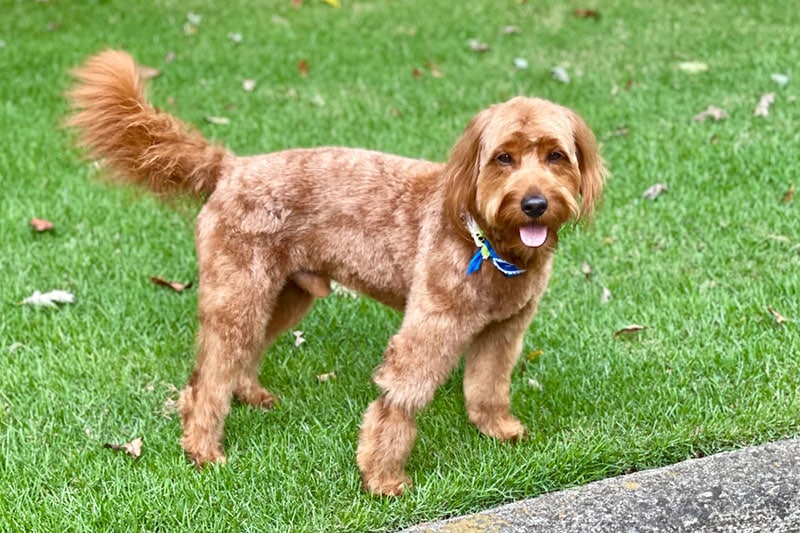

What Are Some Ways to Exercise Your Goldendoodle?
Fortunately, Goldendoodles can enjoy multiple forms of exercise to get their daily 30–60 minutes of activity. A brisk walk may be enough for some Goldendoodles, especially older ones, but most benefit from additional play sessions with their owners and other activities.
Jogging, hiking, or swimming are all good options for a Goldendoodle. Most well-socialized Goldendoodles get along with other dogs, so a supervised trip to an off-leash park could be a fun activity. Running off-leash or playing fetch in a fenced area is another good way to tire out a Goldendoodle.
Goldendoodles also enjoy canine sports such as flyball, dock diving, agility, and tracking. Participating in these activities allows your dog to experience mental as well as physical stimulation.
Safety Tips for Exercising Your Goldendoodle
Young, growing Goldendoodles should limit their strenuous exercise to avoid injury to their still-developing joints and muscles. Older Goldendoodles and those with back or joint issues should also be careful about exercising too much. For these dogs, stick with low-impact exercise like swimming or walking. It will still help them burn energy without adding extra pressure on those already painful joints. Your vet can help you determine the right amount and type of exercise for young, old, or mobility-challenged Goldendoodles.
Avoid exercising your Goldendoodle when it’s hot outside. Heatstroke is a life-threatening medical condition that can happen faster than you might think, especially in young or old Goldendoodles. Your dog can also burn their paw pads on the scorching pavement.
Always keep your Goldendoodle on a leash unless they are within a secure area. Even the most well-trained Goldendoodle may ignore a command at the wrong time and get lost or injured running freely off-leash. Be alert to other dogs running off-leash to prevent potential issues as well.
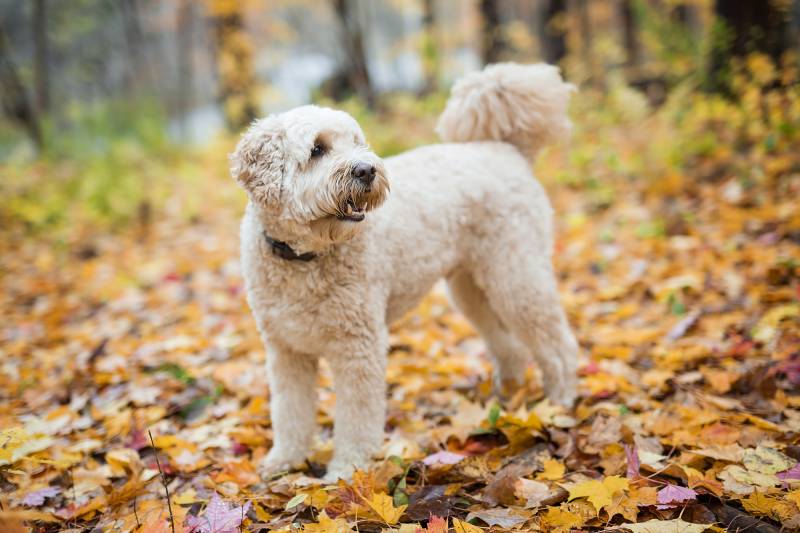

Signs Your Goldendoodle Is Getting Too Much Exercise
Not getting enough exercise can be a problem for your Goldendoodle, but too much of a good thing is also a concern. Here’s how to tell your Goldendoodle may be getting too much exercise.
- Signs of pain like limping or moving slower are clear signs of overexertion. Sore joints and muscles, in addition to actual injuries, can all occur if your Goldendoodle is getting too much exercise. You may also notice that your Goldendoodle’s paw pads are worn down, torn, or bleeding.
- Excessive panting, red gums, or lethargy can all be signs of heat stroke or exhaustion, which indicates that your Goldendoodle is exercising too hard.
- If your normally excited Goldendoodle suddenly doesn’t seem interested in their daily walk, it could be a sign they’ve been getting too much exercise. However, it could also indicate that your dog isn’t feeling well or has other health issues.
- Make an appointment with your veterinarian if you notice any of these signs or have additional concerns about your Goldendoodle. If you see signs of heat stroke, immediately get your dog to a veterinarian.


Conclusion
If you’re considering adding a Goldendoodle to the family, plan on spending at least 30–60 minutes each day exercising your pet. This is not the dog for families who are too busy to spend time with them or individuals who can’t meet their activity needs. Goldendoodles are extremely popular for a reason, but that doesn’t mean they are the perfect fit for everyone. Don’t put yourself or the Goldendoodle in a bad situation by committing to a pet you don’t have the time or energy to care for properly.
Featured Image Credit: Marcello Sgarlato, Shutterstock

